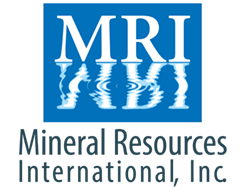[fusion_tb_pagination layout=”text” preview_position=”bottom” height=”36″ same_term=”no” taxonomy=”category” inverse_post_order=”no” border_size=”1″ preview_height=”90″ preview_wrapper_width=”500″ preview_width=”20″ box_shadow=”no” box_shadow_blur=”0″ box_shadow_spread=”0″ hide_on_mobile=”small-visibility,medium-visibility,large-visibility” animation_direction=”left” animation_speed=”0.3″ animation_delay=”0″ margin_bottom=”40px” /] [fusion_tb_content excerpt="no" excerpt_length="55" strip_html="yes" dropcap="no" hide_on_mobile="small-visibility,medium-visibility,large-visibility" dropcap_boxed="no" animation_direction="left" animation_speed="0.3" animation_delay="0" /][fusion_tb_meta layout="floated" display_element_labels="yes" read_time="200" reading_time_decimal="yes" alignment_medium="flex-start" alignment_small="flex-start" alignment="flex-start" stacked_vertical_align="flex-start" stacked_horizontal_align="flex-start" height="36" hide_on_mobile="small-visibility,medium-visibility,large-visibility" animation_direction="left" animation_speed="0.3" animation_delay="0" /][fusion_sharing layout_small="stacked" layout="floated" tagline_visibility="show" tagline_size="4" tagline="Share This Story, Choose Your Platform!" border_color="#cccccc" stacked_align_small="center" stacked_align="flex-start" alignment_small="space-between" alignment="flex-end" hide_on_mobile="small-visibility,medium-visibility,large-visibility" sticky_display="normal,sticky" animation_direction="left" animation_speed="0.3" animation_delay="0" tagline_placement="after" separator_border_sizes="0" separator_border_color="#cccccc" margin_bottom="40px" /]
[fusion_tb_content excerpt="no" excerpt_length="55" strip_html="yes" dropcap="no" hide_on_mobile="small-visibility,medium-visibility,large-visibility" dropcap_boxed="no" animation_direction="left" animation_speed="0.3" animation_delay="0" /][fusion_tb_meta layout="floated" display_element_labels="yes" read_time="200" reading_time_decimal="yes" alignment_medium="flex-start" alignment_small="flex-start" alignment="flex-start" stacked_vertical_align="flex-start" stacked_horizontal_align="flex-start" height="36" hide_on_mobile="small-visibility,medium-visibility,large-visibility" animation_direction="left" animation_speed="0.3" animation_delay="0" /][fusion_sharing layout_small="stacked" layout="floated" tagline_visibility="show" tagline_size="4" tagline="Share This Story, Choose Your Platform!" border_color="#cccccc" stacked_align_small="center" stacked_align="flex-start" alignment_small="space-between" alignment="flex-end" hide_on_mobile="small-visibility,medium-visibility,large-visibility" sticky_display="normal,sticky" animation_direction="left" animation_speed="0.3" animation_delay="0" tagline_placement="after" separator_border_sizes="0" separator_border_color="#cccccc" margin_bottom="40px" /] [fusion_tb_related related_posts_layout="title_below_image" hide_on_mobile="small-visibility,medium-visibility,large-visibility" heading_enable="yes" heading_size="3" animation_direction="left" animation_speed="0.3" animation_delay="0" /][fusion_tb_comments template_order="" avatar="square" headings="show" recaptcha_info="" heading_size="2" padding="40" hide_on_mobile="small-visibility,medium-visibility,large-visibility" animation_direction="left" animation_color="" animation_speed="0.3" animation_delay="0" /]
[fusion_tb_related related_posts_layout="title_below_image" hide_on_mobile="small-visibility,medium-visibility,large-visibility" heading_enable="yes" heading_size="3" animation_direction="left" animation_speed="0.3" animation_delay="0" /][fusion_tb_comments template_order="" avatar="square" headings="show" recaptcha_info="" heading_size="2" padding="40" hide_on_mobile="small-visibility,medium-visibility,large-visibility" animation_direction="left" animation_color="" animation_speed="0.3" animation_delay="0" /]

Are supplements needed to prevent mineral deficiency?
About the author : Mineral Resources International, Inc.®
MRI is a family-owned and operated business (well into its third generation) and is a source of pride for us. Our mission is to improve global well-being through mineral nutrition.
[fusion_search live_results_height="250" live_results_scrollbar="hidden" animation_direction="left" animation_speed="0.3" animation_delay="0" hide_on_mobile="small-visibility,medium-visibility,large-visibility" sticky_display="normal,sticky" margin_bottom="20px" /]




Dwight Miller says:
admin says:
admin says: